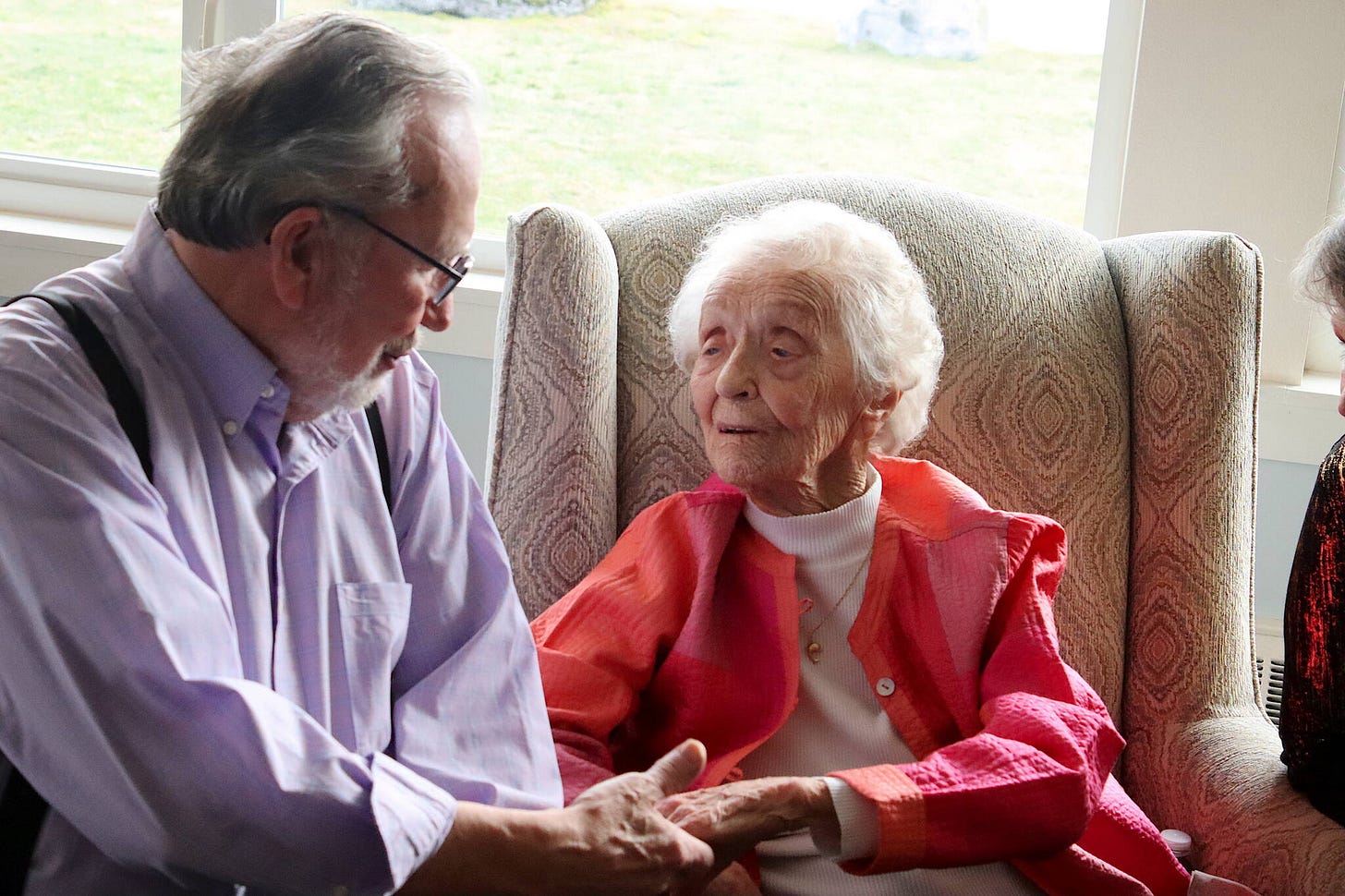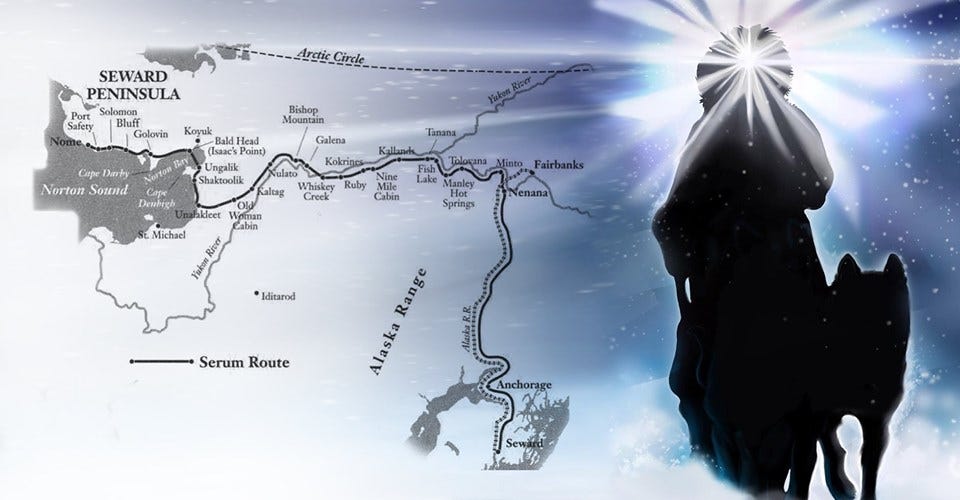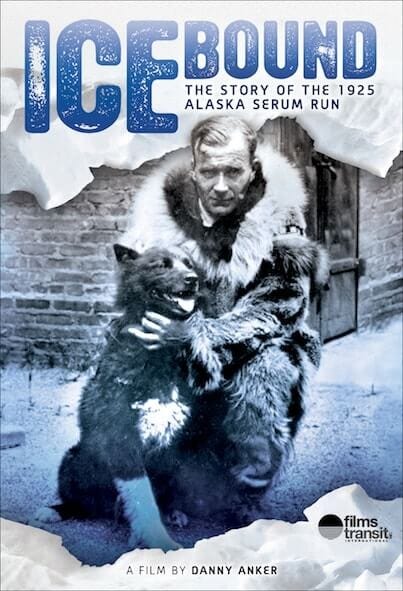2025 will be the Centennial year of the Great Race of Mercy, known as the Serum Run to Nome, when 20 mushers and around 150 dogs raced across Alaska with a transport of diphtheria antitoxin to rescue the small town of Nome and the surrounding communities from a potential epidemic. The riveting story has been told and retold over the years, and there’s a very interesting article at Wikipedia, with details of the relay participants and distances covered. At a time when 25 miles was considered “an extreme day’s mush,” more than a dozen teams traveled farther than 25 miles, and three traveled twice that distance.
Plans are being made to recognize and celebrate the historic event, and foremost among those is an expedition planned by Jonathan Hayes, the owner of the Poland Spring Seppala Kennels in Fort Kent, Maine, featuring dogs of the Seppala Siberian Husky breed. In January 2025 Hayes will lead the Centennial Seppala Expedition on a 700-mile dog sled adventure from Nenana to Nome, Alaska, traveling with the renowned polar adventurer Eric Larsen. Hayes writes, “By recreating this iconic race, I hope to connect a new generation to the story and spirit of Seppala and Togo. Genetically, every dog on our team is a registered purebred descendant of Leonhard Seppala’s heroic team. Therefore, returning to Nome will be a 100-years-in-the-making homecoming for all my dogs.”
Alaskan artist Jon Van Zyle created an original painting dedicated to Hayes’ 2025 Centennial Seppala Expedition, making a limited edition 100 prints available as a fundraiser. Titled “Honoring the Past,” the art features portraits of Leonhard Seppala and Jonathan Hayes flanking their lead dogs.
Another event gaining traction and focus in relation to the Serum Run Centennial is the Leonhard Seppala House Project, a restoration effort which has been many years in the making. Registered with the Library of Congress in Washington DC in 1936, an agreement was finally reached with the City of Nome and the Carrie M. McLain Memorial Museum, and the house will be renovated, moved, and relocated near the museum. You can learn more about the current efforts via a podcast with Deb Glenn, Board Member for the Seppala House Project, at Mushing.com.
In that podcast, Deb mentions another expedition to Nome, spearheaded by Mushing magazine’s publisher Robert Forto. Titled simply the Serum Run Expedition, the website notes ‘In 2025 a very select team of dog mushers, snowmachiners, and history-lovers will embark on a 750-mile expedition from Nenana to Nome following the old Serum Run Trail.”

A heartwarming article about Jirdes Winther Baxter, the last survivor of the 1925 Nome diphtheria epidemic, celebrating her 100th birthday in Juneau, appeared in the February 26, 2024 edition of the Juneau Empire. From the article: “Born on Feb. 25, 1924, to parents who had moved from Norway to Nome, Jirdes was hospitalized with the illness on Jan. 31, 1925. Just days earlier Nome’s only doctor, Curtis Welch, had sent an emergency telegraph to the U.S. Public Health Service requesting 1 million units of diphtheria antitoxin. That resulted in the famous serum run by 20 mushers and about 150 sled dogs over 674 miles in five and a half days from Nenana to Nome.”
The excellent documentary video “Icebound,” narrated by Sir Patrick Stewart, took director and producer Daniel Anker eight years to film and involved hundreds of people — researchers, crew members, scholars, archivists, mushers, and citizens throughout the state of Alaska, particularly in the villages of Nenana, Galena, Unalakleet and the town of Nome. The award-winning ninety-minute video is available to watch on YouTube and other platforms.








